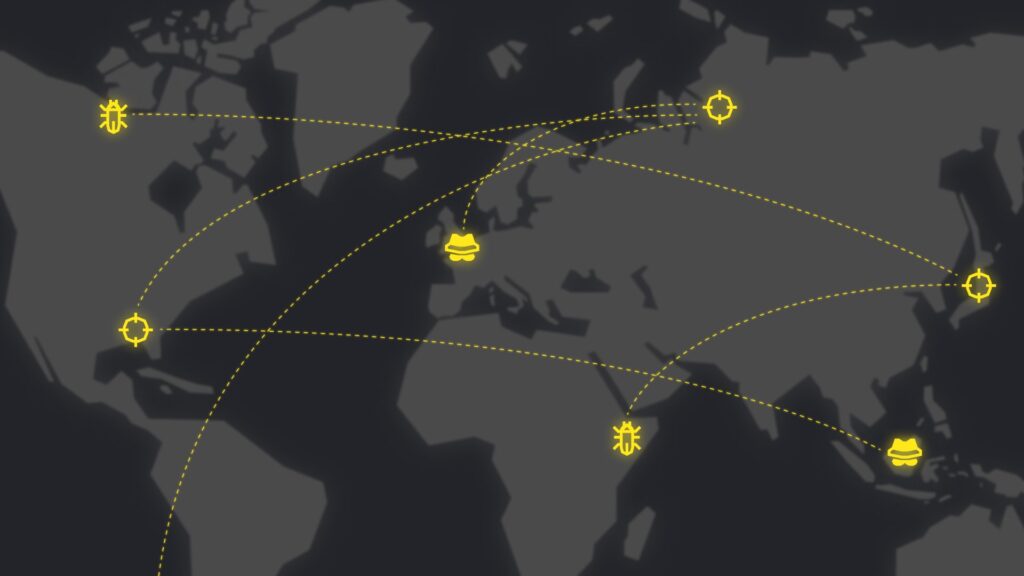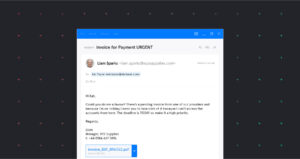Traditionally, security leaders view of nation-state attacks has been ‘as long as you’re not someone like BAE systems or a Government, you’re fine’ But in the last three years nation-state attacks doubled in number to over 200… and we’ve yet to see the full cyber impact of the war in Ukraine. Consequently, nation-state attacks are something all security leaders should be aware of and understand. Here’s what you need to know.
-
What is a nation-state attack?
Nation-state attacks are cyberattacks originating from a particular country that attempt to further that country’s political goals, objectives, or interests.
How a nation-state attack differs from a regular cyber attack
Nation-state attacks are typically defined as APTs, or advanced persistent threats – a term first defined in 2005. They are referred to as advanced because they have access to exploits and techniques that are more professional, more effective, and more expensive than the average criminal actors.
Nation-state attackers can have teams full of people that can work a 24-hour shift and handoff every 8 hours. There’s also the question of the duration of an attack. APTs play the long-game, and can sometimes take 18 to 24 months before any compromise takes place. The bottom line: nation-state hackers have the resources to wait for the perfect moment to strike.
What are the aims of a nation-state APT attack?
With the nearly unlimited money and resources of a nation-state , nation-state attackers can try every technique and tactic available until they eventually accomplish their goal. And those goals are nearly always political rather than purely criminal. APT attacks generally aim to do one of the following:
-
Exfiltrate data containing military secrets or intellectual property
-
Conduct propaganda or disinformation campaigns
-
Compromised sensitive information for further attacks or identity theft
-
sabotage of critical organizational infrastructures
Russia blurs this line in that they use criminal activity in furtherance of political goals, and have been for years. They also have an APT set whose objective is essentially disruption and discord, so that security teams and government agencies don’t know where to place the defense resources.
Which businesses are most at risk from a nation-state attack?
A sector all threat actor groups are interested in is Cleared Defense Contractors (CDCs). CDCs are businesses granted clearance by the US Department of Defense to access, receive, or store classified information when bidding for a contract or other supporting activities.
One of the first APT attacks against CDCs was Titan Rain in 2003. Suspected Chinese hackers gained access to the computer networks companies such as Lockheed Martin, Sandia National Laboratories, Redstone Arsenal, and NASA, as well as UK Government departments and companies. What’s more, it’s believed that they were inside the network for over three years.
Infrastructure companies are also popular targets. US infrastructure companies such as Colonial Pipeline have been getting hit more and more frequently, and Ukraine suffered a power grid outage in 2015. And banks – especially national banks – are under continual attack, and in light of the recent removal of Russia from the SWIFT payment system, western banks are presumed to be under increased threat in retaliation.
Softer secondary targets
Although traditionally, targets with connections to the military bore the brunt of APTs, there are signs that this is spreading to other industries.
In 2021 Microsoft shared detailed information regarding a “state-sponsored threat actor” based in China that targeted a wide range of entities in the U.S. — including law firms. The highly sophisticated cyber-attack used previously unknown exploits to infiltrate Microsoft Exchange Server software, so it’s reasonable to assume that if you have tangential connections to a political target of one of these countries, then you could be at risk.
As KC Busch, Tessian’s Head of Security Engineering & Operations explains “APTs might need to spend a million dollars to compromise their direct target. But if they can find a law firm connected with that target that doesn’t encrypt outbound comms or has adequate email protection, then they’re going to go for the law firm rather than the million-dollar target”
This underscores the importance of not just your own cybersecurity posture, but that of every organization in your network or supply chain. You’re only as strong as your weakest link..
The phases of an APT attack
APT attacks come in three phases.
- First, there’s network infiltration, typically achieved through compromised credentials. If compromised credentials aren’t an option, or defenses are particularly robust, nation-state attackers might use a zero-day attack. Countries can have teams that will research and write their own zero-days, but more commonly, they will buy them from a gray market of third-party companies that aggregate exploits and sell them without much ethical thought of how they’re used.
This murky world of zero-day exploits and the people that broker them to Governments and security agencies was chronicled by Former New York Times cybersecurity reporter Nicole Perlroth in her recent book, ‘This Is How They Tell Me The World Ends’. Perlorth’s book highlights how for decades, US government agents paid thousands, and later millions of dollars to hackers willing to sell zero-days, and how they lost control of the market. The result is that zero-days are in the hands of hostile nations, who have money to purchase them and a need to deploy them as they’re becoming rarer and more expensive.
- The second phase is the expansion of the attack to spread to all parts of the network or system. As we’ve mentioned, APT attacks are not hit-and-run. With time on their side, hackers can wait patiently in the network before gaining full access and control of it.
- Thirdly, there’s the attack itself. This could involve collecting data and exfiltrating it, or disrupting critical infrastructure systems. Furthermore, several APT attacks have started with a distributed denial-of-service (DDoS) attack which acts as a smokescreen as data that’s been amassed over what could be months or years is exfiltrated.
Notable nation-state attacks
The most sophisticated: Stuxnet is widely believed to have been developed by the USA and Israel for use against Iran’s uranium enrichment program. It disrupted the plant’s uranium centrifuges by varying their spin rate, but not enough to cause them to shut down. Furthermore, false data was displayed back to the controller, so employees thought everything was business as usual.. Designed to be delivered by an infected USB stick, it could cross the air gap that protected the plant. However, it got out into the wild when an engineer took his infected laptop home from the plant, and connected it to the internet.
The biggest: 2015’s Anthem breach (China was reported to be behind it) saw the sensitive personal data of approximately 78.8 million Americans fall into the wrong hands. Brian Benczkowski, the assistant attorney general in charge of the Department of Justice Criminal Division, called the Anthem hack “one of the worst data breaches in history.”
The data wasn’t ransomed back to the company, and the reasons for the attack remain unclear. By 2019 the DOJ unsealed an indictment charging two Chinese nationals for the attack, but an indication of the alleged hackers’ motives or affiliation was noticeably absent. Current thinking is that it will be used for identity theft or to identify interesting individuals or Government employees for further exploitation and attack. Only nation-states have the resources to process that much intel and find the 100 or so people whose credentials can be further targeted. As for Anthem, the breach cost them over $40 millionto settle the resulting claims, and clear up the mess.
What’s the future of nation-state attacks?
The Anthem breach and others led to a very loose set of guidelines on what is, and what is not, acceptable. This was hammered out between former President Obama and President Xi Jinpingof China in 2015, but none of this has the force of law like the Geneva Convention. And with an actor like Russia currently in a highly aggressive position, it’s reasonable to expect an escalation until desired political goals are achieved.
Attack types are likely to evolve, too. One example: wipers.. Unlike ransomware, where you pay the money and (hopefully) get your data back, a wiper will display the message as it’s erasing all your data. They’re a class of malware that have a narrowly targeted use, but if someone decided to let those loose, the damage could be astronomical. And worryingly, they’ve already been spotted in Ukraine.
How to protect your organization from nation-state attacks
The federal Cybersecurity & Infrastructure Security Agency (CISA) posted a bulletin, titled “Shields Up,” which includes an evolving overview of the current cyber threat environment and specific steps that organizations, corporate leaders, and CEOs can take to bolster their cyber defenses. We have more on those recommendations, as well as how to foster a risk-aware culture, in this blog post. Enacting these defenses and upskilling your team is the best way to protect your organization from Nation-state attacks.
For the latest cybersecurity news and articles, sign up for our newsletter, and follow us on Twitter and LinkedIn
Andrew Webb
Senior Content Manager

















